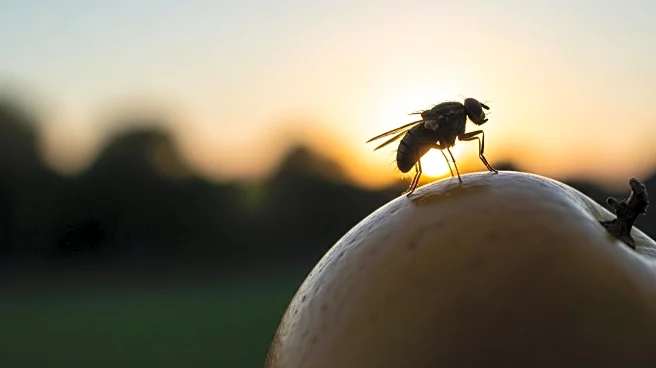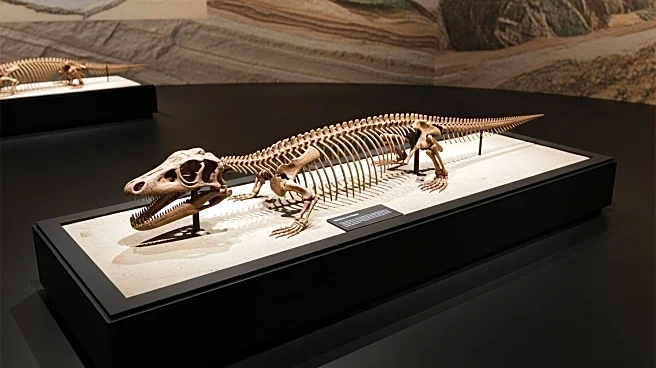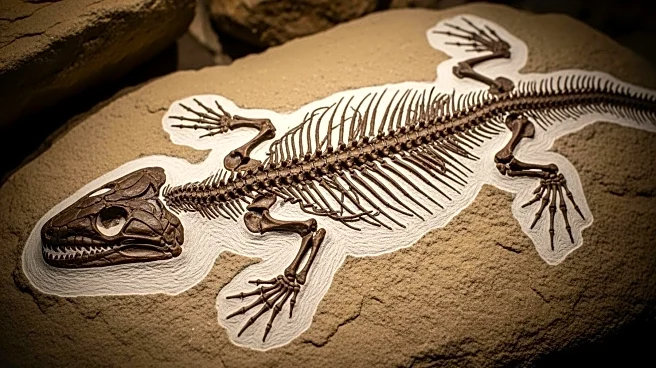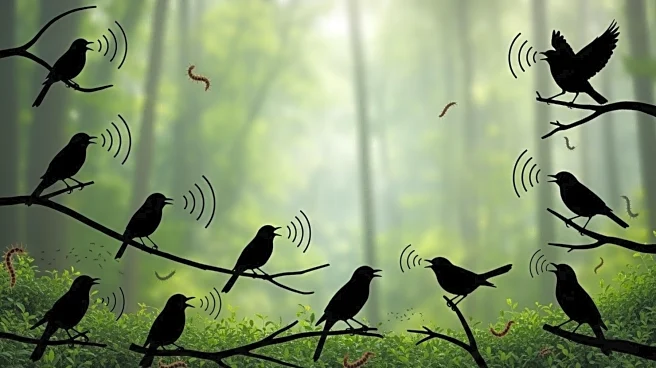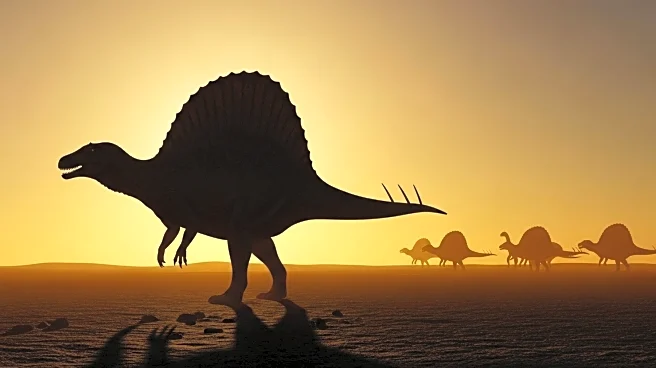What is the story about?
What's Happening?
Recent research has uncovered significant metabolic adaptations in Drosophila melanogaster, commonly known as fruit flies, when exposed to short photoperiods. The study found that these flies consume more food during short days, despite being less active, suggesting an adaptation to the coming winter. Short-day conditions also increase the flies' cold resistance, as evidenced by a higher survival rate in chill coma recovery tests. Additionally, lipid levels in the brain, but not in the body or head, were significantly altered, indicating that the photoperiod affects brain metabolism. The study highlights the role of lipid droplets in energy storage and suggests that short days increase the number of lipid droplets in the brain, preparing the flies for winter survival.
Why It's Important?
Understanding how organisms adapt to changing environmental conditions is crucial for insights into survival strategies and evolutionary biology. The findings on Drosophila melanogaster could have broader implications for studying metabolic adaptations in other species, including humans. These adaptations may inform research on seasonal affective disorders and other conditions influenced by photoperiod changes. Additionally, the study contributes to the understanding of how environmental factors can drive metabolic changes, potentially influencing ecological dynamics and species interactions.
What's Next?
Further research may explore the genetic basis of these metabolic adaptations and their implications for other species. Scientists could investigate how these findings apply to other organisms that experience seasonal changes, potentially leading to advancements in understanding climate change impacts on biodiversity. Additionally, the study may prompt investigations into the role of lipid metabolism in other physiological processes, such as aging and disease resistance.
Beyond the Headlines
The study raises questions about the ethical considerations of manipulating environmental conditions in laboratory settings and the potential long-term impacts on species used in research. It also highlights the importance of considering ecological and evolutionary contexts when interpreting laboratory findings.
AI Generated Content
Do you find this article useful?
